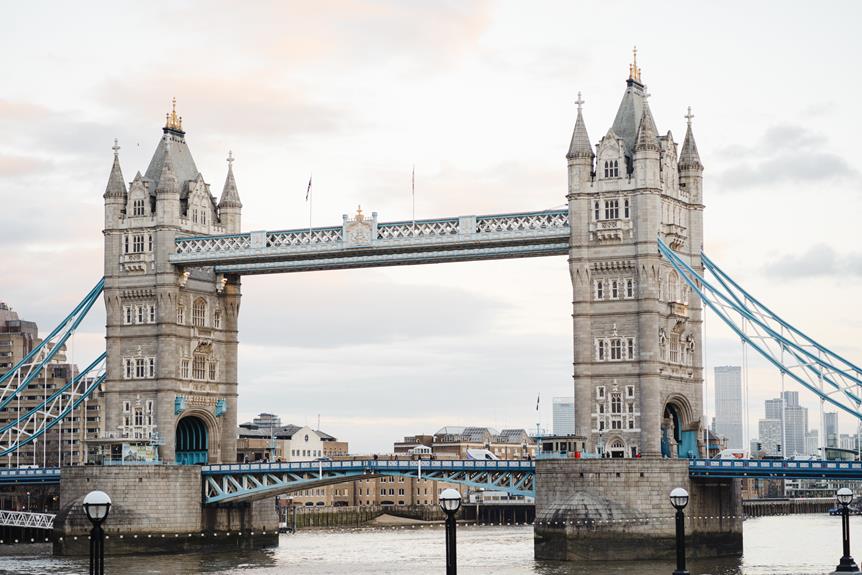Nestled in the northern region of Bangladesh, Rangpur Division stands as a testament to the intricate interplay of culture and connectivity. This administrative division, comprising eight districts, is a microcosm of diversity, with its rich tapestry of customs, traditions, and ethnicities. From the bustling cityscapes to the sprawling rural landscapes, Rangpur Division offers a glimpse into a world where vibrant cultural heritage intertwines seamlessly with a well-developed network of roads, railways, and airports. As we embark on this exploration, we will unveil the captivating facets of Rangpur Division that make it a captivating and enigmatic destination.
Administrative Division of Rangpur
Rangpur Division, comprising eight districts in northern Bangladesh, is an administrative region that showcases a rich cultural heritage and boasts excellent connectivity through various modes of transportation. The division has witnessed significant economic development, with industries such as textiles, agriculture, and pharmaceuticals contributing to its growth. Educational institutions in Rangpur Division play a vital role in nurturing the intellectual capital of the region. It is home to several renowned universities, colleges, and schools that provide quality education to students. These institutions cater to a diverse range of disciplines, including science, arts, commerce, and engineering. Moreover, vocational training centers and technical institutes in the division ensure that students acquire practical skills to meet the demands of the job market. The focus on education and economic development in Rangpur Division highlights the region's commitment to progress and prosperity.
Demographics of Rangpur Division
The population composition of Rangpur Division reflects a diverse range of religious affiliations and ethnic communities. Islam is the majority religion, with 86.26% of the population being Muslims. Hindus make up 12.98% of the population, while other religions or those not stating their religion account for 0.76%. The division has a population density of 980 people per sq km, according to the 2011 census. In terms of gender, there is a slightly higher male population (51.18%) compared to females (48.82%). The majority community in Rangpur Division is Bengali, with notable ethnic groups including Santal, Munda, Oraon, Rajbanshi, Kaibarta, and Koch. This cultural diversity contributes to the richness and vibrancy of the division. Rangpur Division's demographics play an important role in shaping its economic development and social fabric.
Communication in Rangpur Division
With a well-developed network of road, rail, and air communications, Rangpur Division ensures seamless connectivity within and beyond its borders. This efficient transportation infrastructure has a significant impact on the region's development and connectivity. The N5, a major national highway, connects the division with the capital city and other parts of the country. Additionally, there are 21 express trains that link different districts of Rangpur Division with the capital and other regions. The division also boasts three domestic airports, with Saidpur Airport being the major one. However, while physical connectivity is well-established, the impact of technology and internet connectivity in rural areas of Rangpur Division is still a work in progress. Efforts are being made to bridge the digital divide and bring reliable internet access to remote areas, enabling greater connectivity and access to information for all residents.
Districts of Rangpur Division
The efficient transportation infrastructure of Rangpur Division, including its well-developed road, rail, and air communications, is complemented by its division into eight distinct districts, each with its own unique cultural and historical significance. These districts are Dinajpur, Kurigram, Gaibandha, Lalmonirhat, Nilphamari, Panchagarh, Rangpur, and Thakurgaon. Here are some highlights of the districts:
- Dinajpur: Known for its historical sites such as Kantajew Temple and Ramsagar National Park.
- Kurigram: Famous for its scenic beauty and the enchanting Tista River.
- Gaibandha: Home to the historic Mahasthangarh, one of the oldest archaeological sites in Bangladesh.
- Lalmonirhat: Offers breathtaking landscapes, including tea gardens and the beautiful Tushar Kanti Lake.
- Nilphamari: Known for its vibrant local culture and the picturesque Uttara Ganabhaban.
These districts not only offer captivating tourist attractions but also contribute to the economic activities in Rangpur Division, including agriculture, industry, and trade.
Capital Cities of Rangpur Districts
The capital cities of the districts in Rangpur Division serve as vibrant centers of culture, commerce, and governance, showcasing the region's rich heritage and providing a hub for economic activities. Each district has its own capital city, which holds great significance in terms of cultural heritage and historical landmarks. For example, Rangpur City, the capital of Rangpur district, is known for its iconic Tajhat Palace. This magnificent palace, with its intricate architectural design and beautiful gardens, attracts numerous visitors who are interested in exploring the region's history. Similarly, other district capitals like Dinajpur, Kurigram, Gaibandha, Lalmonirhat, Nilphamari, Panchagarh, and Thakurgaon also boast their own historical landmarks and cultural sites that contribute to the overall charm and allure of Rangpur Division. These capital cities not only serve as administrative centers but also as gateways to the rich cultural tapestry of the region.
Population and Area of Rangpur Division
Rangpur Division, with its vibrant capital cities and rich cultural heritage, encompasses a diverse population and vast geographic area. With a total area of 16,184.99 sq km, the division is home to a population of 17,610,956, as per the 2022 census. The population density in Rangpur Division is approximately 980 people per sq km. Islam is the major religion in the division, with 86.26% of the population being Muslims. Hindus make up 12.98% of the population, while other religions or those not stating their religion account for 0.76%. The division has a slightly higher male population (51.18%) compared to females (48.82%). Rangpur Division is a melting pot of various ethnic groups, with the majority community being Bengali.
Religion and Ethnicity in Rangpur Division
With a rich tapestry of religious and ethnic diversity, Rangpur Division is a vibrant melting pot of cultures and traditions. Interfaith harmony is a hallmark of this region, as people of different religious backgrounds coexist peacefully. The majority of the population in Rangpur Division follows Islam, while Hindus also form a significant minority. Alongside these two major religions, there is a small percentage of people who practice other religions or do not state their religious affiliation. This diversity is celebrated through various cultural festivals, where people come together to showcase their traditions and heritage. These festivals are a true reflection of the unity and inclusivity that exist in Rangpur Division, where people from different religious and ethnic backgrounds participate and rejoice in each other's festivities.
Transportation in Rangpur Division
The transportation system in Rangpur Division seamlessly connects its diverse districts and ensures efficient mobility for both residents and visitors. The division boasts a well-developed road infrastructure, with the N5 (National Highway 5) serving as a vital link to the capital and other parts of the country. This extensive network of roads allows for smooth and convenient travel within and beyond the division. Additionally, Rangpur Division has three domestic airports, with Saidpur Airport being the major one. This air connectivity provides convenient access for travelers looking to explore the region or connect to other parts of the country. Whether by road or air, the transportation options in Rangpur Division cater to the needs of its residents and facilitate seamless travel experiences.
Legacy of Rangpur
Having explored the efficient transportation system of Rangpur Division, it is fascinating to uncover the rich legacy that this region has left behind, extending even beyond its geographical boundaries. Rangpur has made a significant impact on branding with the naming and association of certain products. One such example is the fruit Rangpur, which is named after the division due to its association with the region. Another notable mention is Tanqueray Rangpur Gin, a type of gin that incorporates the flavor of the Rangpur fruit. These products have gained recognition and popularity beyond the region, showcasing the influence of Rangpur on branding. Additionally, Rangpur has also taken steps towards cultural heritage preservation, ensuring that its traditions and historical significance are safeguarded for future generations.
Frequently Asked Questions
What Are the Major Industries and Economic Activities in Rangpur Division?
Major industries in Rangpur Division include agriculture, textiles, jute and jute goods, ceramics, and agro-based industries. The division is known for its agricultural productivity, with crops such as rice, wheat, sugarcane, and vegetables being cultivated. The textile industry is also prominent, with numerous textile mills and garment factories contributing to the local economy. Additionally, the division has a thriving ceramics industry, producing high-quality pottery and ceramics. Agro-based industries, such as food processing and dairy farming, are also significant contributors to the economic activities in Rangpur Division.
How Is the Educational System and Literacy Rate in Rangpur Division?
The educational system in Rangpur Division is a vital component of its development and progress. With a focus on providing quality education, the division has made significant strides in improving literacy rates. The government has implemented various initiatives to enhance educational opportunities, including the establishment of schools, colleges, and universities. The literacy rate in Rangpur Division has witnessed a commendable increase, contributing to the overall growth and empowerment of its population. The educational system continues to evolve, ensuring that individuals have access to quality education and the necessary skills for a prosperous future.
Are There Any Significant Historical or Cultural Landmarks in Rangpur Division?
Rangpur Division boasts several significant historical and cultural landmarks. These include the Tajhat Palace, a magnificent architectural marvel located in Rangpur City, which attracts numerous visitors. The division also houses various ancient temples, mosques, and archaeological sites that showcase the rich cultural heritage of the region. The historical landmarks in Rangpur Division serve as a testament to its illustrious past and contribute to the preservation and promotion of its cultural identity.
What Are the Main Agricultural Products and Farming Practices in Rangpur Division?
The main agricultural products in Rangpur Division include rice, wheat, maize, jute, sugarcane, vegetables, fruits, and tobacco. Farming practices in the region are diverse, with both traditional and modern techniques being used. Farmers employ methods such as crop rotation, irrigation, and the use of fertilizers and pesticides to enhance productivity. The fertile soil, favorable climate, and availability of water resources contribute to the success of agricultural practices in Rangpur Division.
Are There Any Famous Festivals or Events Celebrated in Rangpur Division?
Famous festivals and cultural events are celebrated with great enthusiasm in Rangpur Division. The region boasts a rich tapestry of cultural heritage, with festivals that showcase the vibrant traditions and customs of the local communities. These events provide a platform for the residents to come together, celebrate their cultural identity, and promote unity. From the colorful Pahela Baishakh (Bengali New Year) celebrations to the joyous Eid festivals, Rangpur Division offers a delightful array of festivities that exemplify the diversity and cultural richness of the region.





